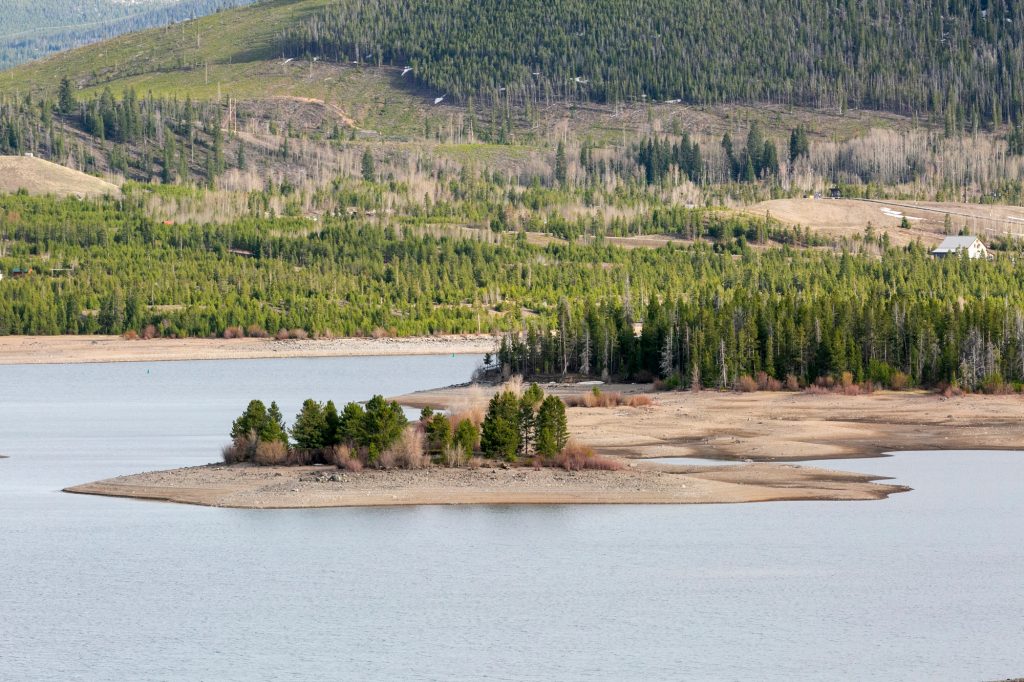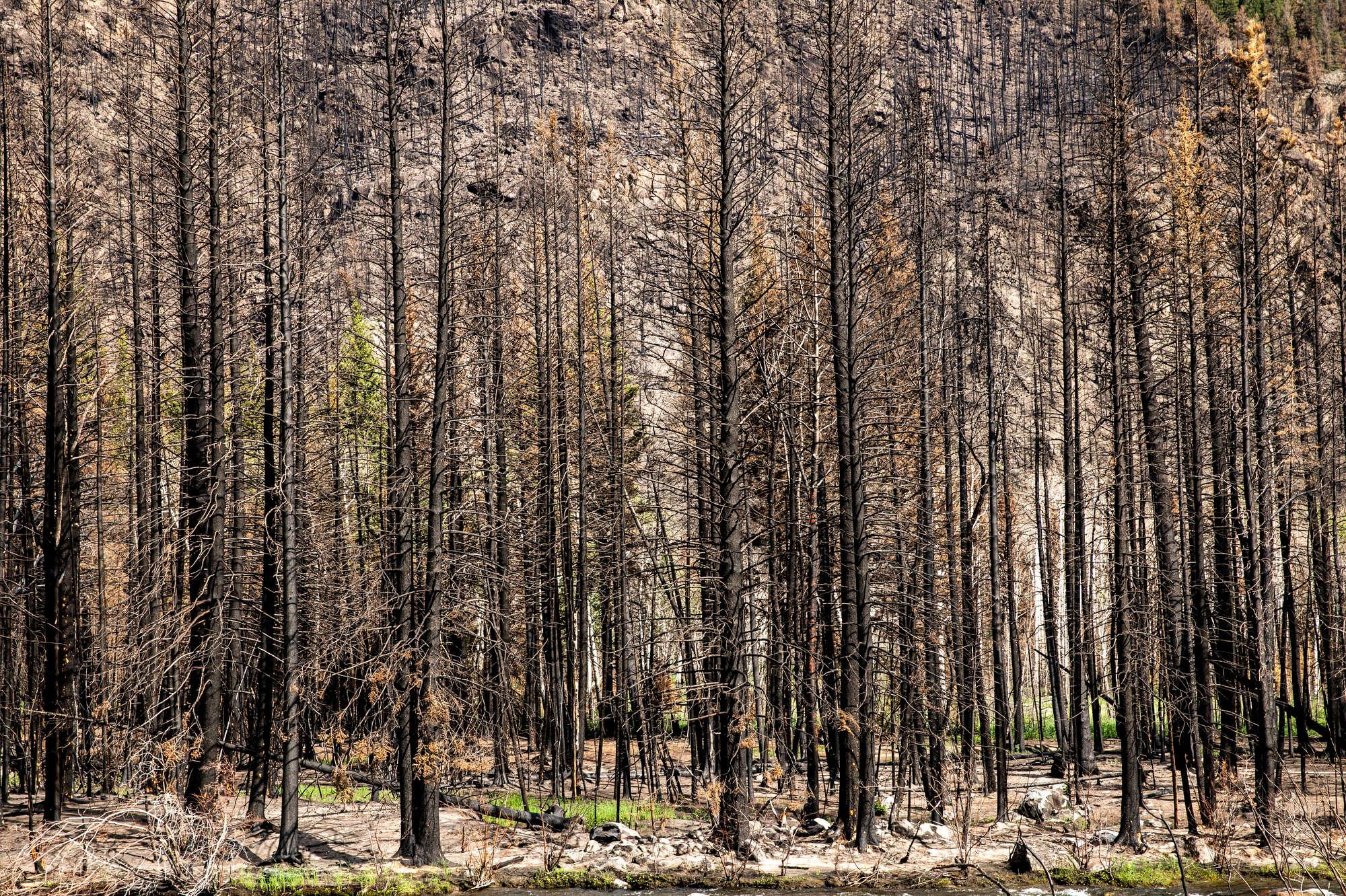
When San Miguel County Commissioner Hilary Cooper recently toured the western edge of her county, it was a chance to see what "exceptional drought" looks like firsthand.
“Red, cracked earth that is just broken and somewhat lifeless,” she said, describing conditions in the Gypsum Valley and Dry Creek Basin.
She said wildlife and vegetation in the region are struggling to survive, as are ranchers and farmers across the Western Slope.
On the eastern end of San Miguel County, Mark Roeber is worried about the future for his 400 head of cattle. There, conditions are slightly better — extreme drought instead of exceptional — but the heat and dryness have deeply impacted how much water is available for irrigation and stored in reservoirs.
“In good years. We'll put up between 300 to 500 ton of hay,” he said. “This year we'll put up zero.”
That means come winter, he’ll either have to buy hay to keep his cattle fed, or sell some off some of his herd.
It’s a similar story for Robbie LeValley, a rancher in Delta County, who’s keeping a close eye on the rangeland where her family’s 400 head of cattle graze.
“Leaves on our grass plants are shorter and they're narrower,” she said, adding that’s the perennial grass. The annual grasses simply didn’t grow. So there’s still green where the cattle feed, but less of it.
On July 1, Gov. Jared Polis declared a drought emergency for the Western Slope, which will keep the state’s Drought Mitigation and Response Plan at its highest level for the region.
But the response to the drought isn’t just coming from within the state. The way LeValley sees it, her family, and the other ranchers and farmers on the Western Slope, are helping feed the nation, so the federal government should help them, too.
They need to supply “resources for the irrigation, for the drought assistance, (to) provide for that food security,” she said.
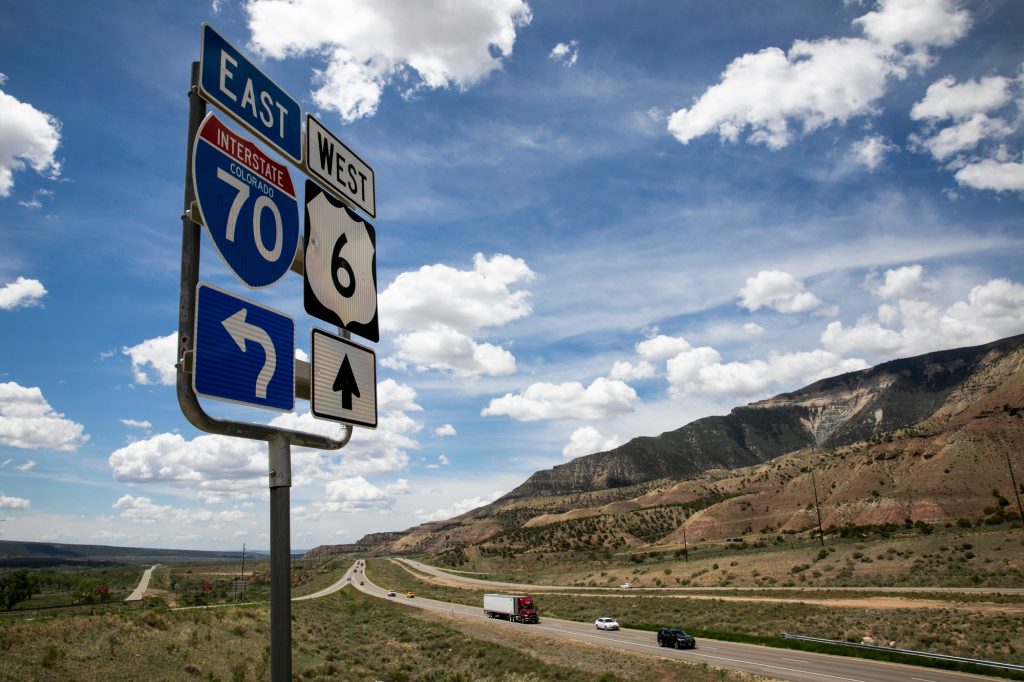
Extreme summer catches Washington’s attention
There’s a confluence of events happening in the West this summer: extreme heat, extreme drought and the possibility of another record-breaking wildfire season, all driven by a long-term drying trend worsened by climate change. It’s so serious that President Joe Biden convened a meeting last week with Western governors to talk about wildfire preparedness and response.
“This is an area that has been under-resourced. But that's going to change, if we have anything to do with it,” Biden said. “We can't cut corners when it comes to managing our wildfires or supporting our firefighters.”
Members of Colorado’s Congressional delegation have their own ideas for how to deal with the twin problems of drought and wildfires.
Roeber says he’s talked to Democratic Sens. Michael Bennet and John Hickenlooper, as well as his local representative, Republican Lauren Boebert, about the need for financial assistance for the ag industry, in particular flexibility in some existing programs, as well as better water efficiency policies and water infrastructure — from storage to piping.
“I think those types of programs we need to really get serious about funding and taking care of what water we do have,” he said.
Boebert backs increasing water storage capacity, something she hit on during a recent hearing.
“I support efforts to streamline cumbersome and bureaucratic policies in order to allow the construction of new water storage projects,” she said.
Boebert sits on a water subcommittee in the House, but when it held a public hearing on the subject, she did not ask any drought-related questions. Instead, she focused on potential conflicts of interest by Elizabeth Klein, the Interior official testifying at the hearing.
A staffer in Boebert’s office said she used the hearing as an accountability opportunity because she had already addressed the drought in an earlier Republican forum, where she asked a range of questions about invasive species to active forest management to whether the country should be building more dams to increase water storage. The staffer said storage, whether reservoirs or dams, would only be looked at in areas where it makes sense.
San Miguel County’s Cooper, a Democrat, agrees issues like more water storage should be discussed, but adds it’s not going to help this season.
“Yes, more water storage is probably needed, but we can do that in smart ways. There's not any more water out there,” she said. She thinks there are better ways to manage water than creating more reservoirs, which are “massive evaporation ponds.”
Cooper said she has requested a meeting with Boebert but hasn’t gotten it yet.
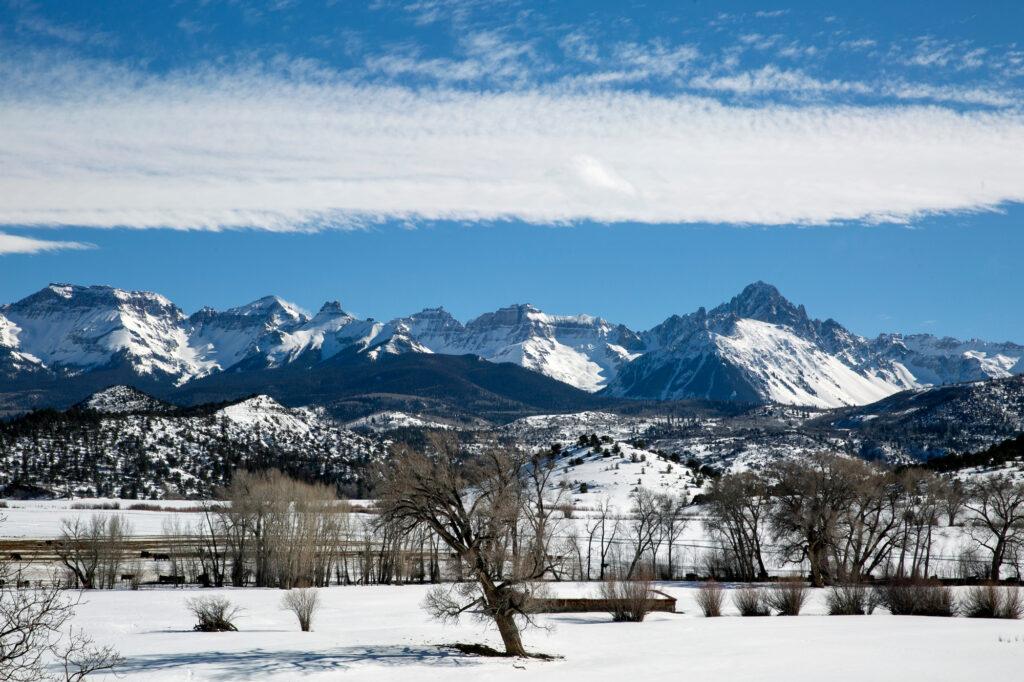
Forests as infrastructure
Zane Kessler with the Colorado River Water District connects what’s needed in the West with one of Washington’s favorite words to argue over these days — infrastructure. He wants the federal government to think broadly and fund projects that improve the health of forests and watersheds, what he describes as natural infrastructure.
“These are the largest reservoirs that we have — snowpack on our forest and federal lands on the Western Slope. But (they should also be) helping to update and modernize our water distribution systems, helping to increase efficiency and ultimately helping our farmers and ranchers and all of our water users adapt to what will certainly be a hotter drier future.”
As an example of how serious the drought crisis is, Kessler noted that the tax adverse Western Slope actually agreed last fall to a tax increase to protect water.
Water is an issue even in parts of the state further east, where the drought has receded, but where wildfires have damaged watersheds and remain a major threat. As Kessler explains, when it comes to drought and wildfires, “everyone has skin in the game.”
Kessler, Cooper and others are watching a number of bills in Congress, including the Outdoor Restoration Partnership Act, a bill offered by Bennet and Rep. Jason Crow. It’s a big-ticket bill that would create jobs focused on forest health and restoring watersheds.
At a recent hearing, Bennet noted, “$60 billion sounds like a lot of money. I know it does. We’re spending that money anyway. We’re just spending it fighting fires.”
In Boulder County, which experienced two of the state’s largest wildfires last year, county commissioner Matt Jones said the federal government needs both a strong offence and a robust defense
“You gotta play offense with forest health mitigation, and you got to play defense with suppression and restoration,” he said.
Echoing the goals of Bennet and Neguse’s bill, Jones said when it comes to fighting wildfires, having enough people on the ground is key.
“[The National Forest Service] just don't have enough staff. That's the bottom line. And so it's very hard for them to get ahead on mitigation work, which is just critical and so much more productive and less expensive than fighting fires, and then trying to clean up after fires,” he said. “They need more people to do that work.”
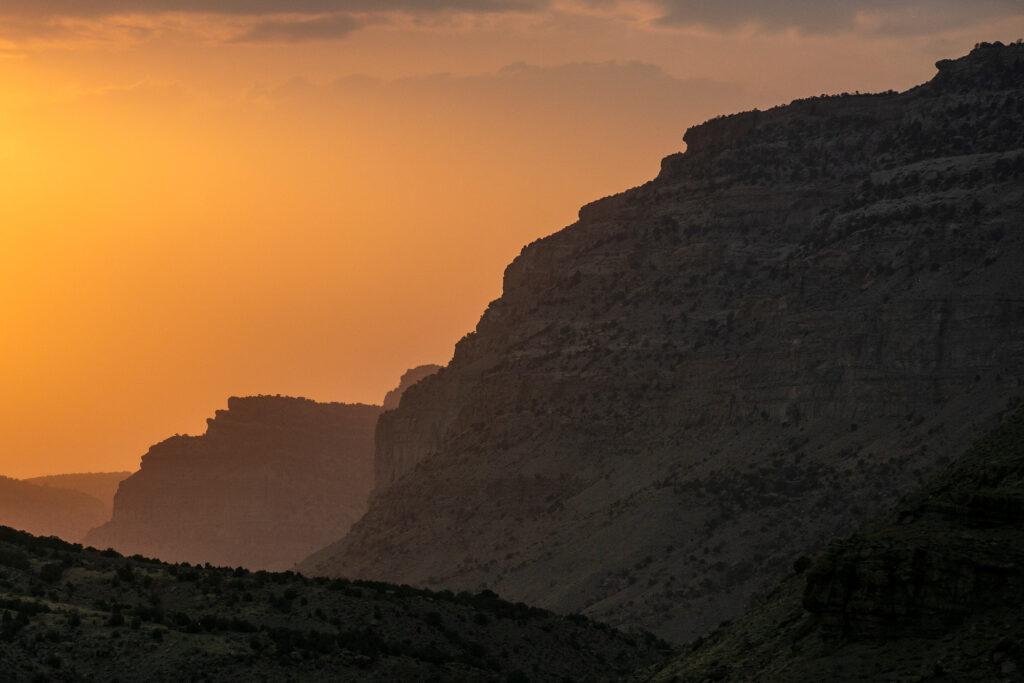
Removing beetle-kill trees, creating a Climate Conservation Corp and other legislative proposals
To be blunt, there are limits to what the federal government or any government can do. They can’t make it rain or control a massive wildfire. What they can do is focus attention — and money — on the issue.
And that’s what some members of the Colorado delegation have been doing in public hearings and through the legislation they’re proposing.
Last week, Boebert introduced an active wildfire management bill that would remove beetle-killed trees from public lands and reform litigation rules she said are used to prevent logging in forests.
Democratic Rep. Joe Neguse has introduced several bills around wildfire prevention and response, and even helped found a bipartisan wildfire caucus. But his big bill, the one he has been pushing since the last Congress, would create a Climate Conservation Corps, modeled on the Civilian Conservation Corps of the Great Depression.
Like the Bennet/Crow bill, it would also create jobs, in this case focused on wildfire prevention and preparedness. It also includes supplemental funding for the WaterSmart program and Water Source Protection program.
Jessica Goad with Conservation Colorado is excited about Neguse’s bill, as well as his Wildfire Recovery Act, which would increase the federal share of the Fire Management Assistance Grants.
But ultimately, Goad said, drought and wildfire are only symptoms.
“We have to fight the disease itself, which is climate change.”
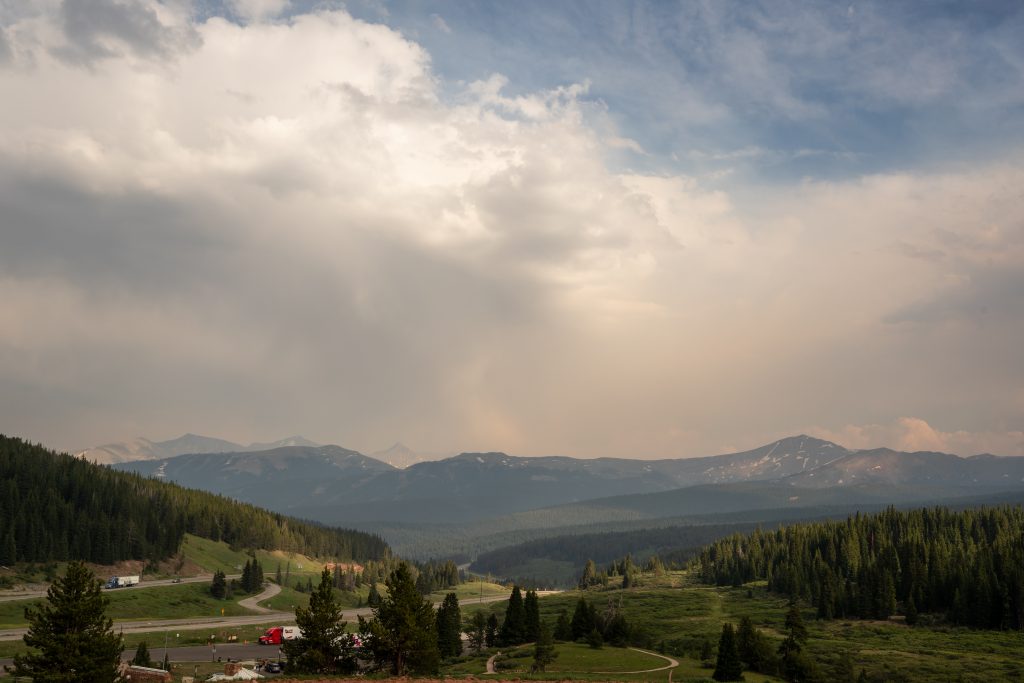
Will there be a partisan shift in discussions on climate?
Colorado’s Democratic members of Congress have been sounding the alarm on climate impacts for a while, but the issue hasn't gained much traction with their Republican colleagues.
That may be changing a bit. Last month GOP Rep. John Curtis of Utah launched a conservative climate caucus. Rep. Doug Lamborn is currently its only Colorado member. And House GOP Leader Kevin McCarthy has created a task force to deal with Climate Change.
When asked about her approach to climate change, Boebert’s office said they look at climate bills on their merits and would not speak in generalities on the issue. In a statement provided to CPR for this story, she blamed Democrats and environmentalists for preventing the construction of new water infrastructure.
“If Democrats really cared about drought, they would support water storage projects, but instead they cave to Green New Deal, dam-busting enviros who want to tear down these sources of clean, renewable energy,” the statement read.
Dams can be controversial projects in local communities, especially if the water they store is intended for cities far away.
Boebert concluded, “As sick as it is, Democrats actually like easily preventable problems like wildfires and drought since it gives them talking points to ram the Green New Deal down our throats.”
Regardless of the politics, Jason Sibold, a geography professor at Colorado State University, said climate is an issue that can’t be ignored as Congress tries to help the West.
“To be very clear, beetles are not driving these wildfires that we see. It is climate, climate, climate," Sibold said. "We can't cut our way out of this.”
He said government priorities are starting to make a needed shift to acknowledge the new reality.
“Are we going to stop fires? No. We're, we're staring down a long time of just increased fire, increased fire, increased fire. But we can protect communities. We can protect people. We can protect valuable infrastructure like watersheds, power lines, et cetera,” he explained.
Back at his ranch in San Miguel, Rancher Mark Roeber said there’s no question that climate change is happening, but he's not confident there's much the government can do.
“I don't know that we have any answers. And I think that's what we have to be careful of, is we don't jump over a cliff trying to fix something that we really have no control over.”
For now, he continues to scan the horizon and check his weather app for any signs of rain as the monsoon season starts. He’s just hoping it doesn’t bring thunderstorms with it because that means lightning.
And any strike in the wrong place could spark a wildfire right now.
